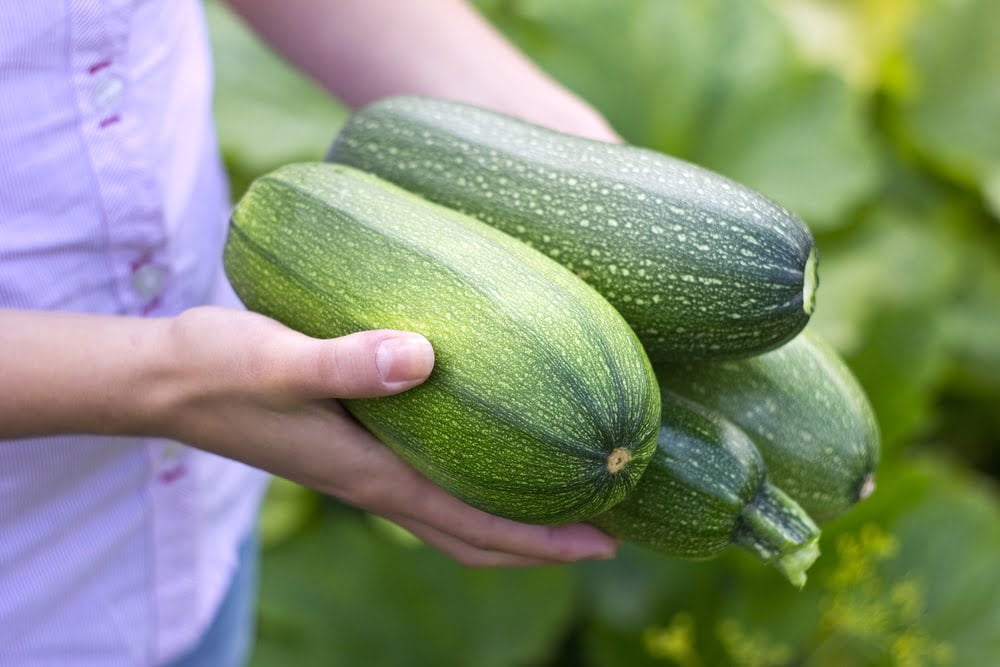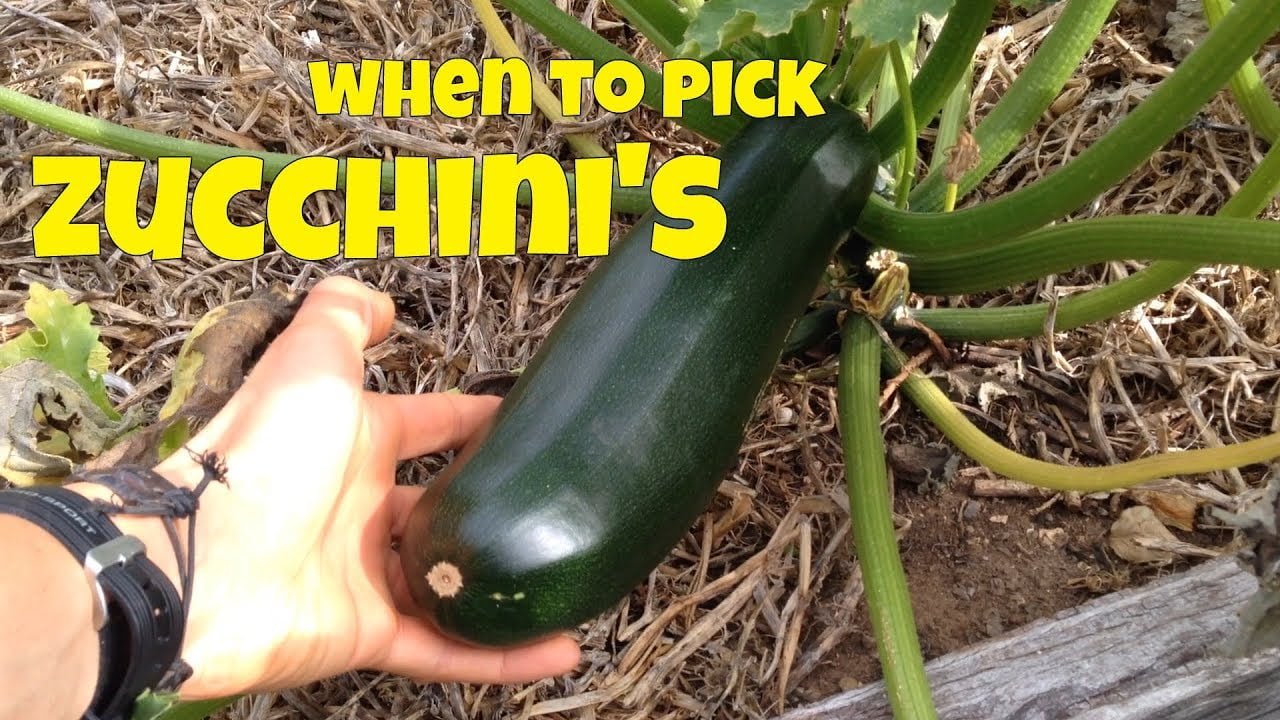I bet you’ve walked through your garden, admiring your zucchini plants, wondering when the perfect moment is to harvest those delicious green wonders. Well, fret no more! In this article, we’ll guide you through the art of knowing exactly when to pick zucchini. From checking the size, color, and texture, to understanding the best time of day to harvest, we’ve got you covered. Get ready to become a zucchini-picking pro and enjoy the freshest produce from your own backyard!
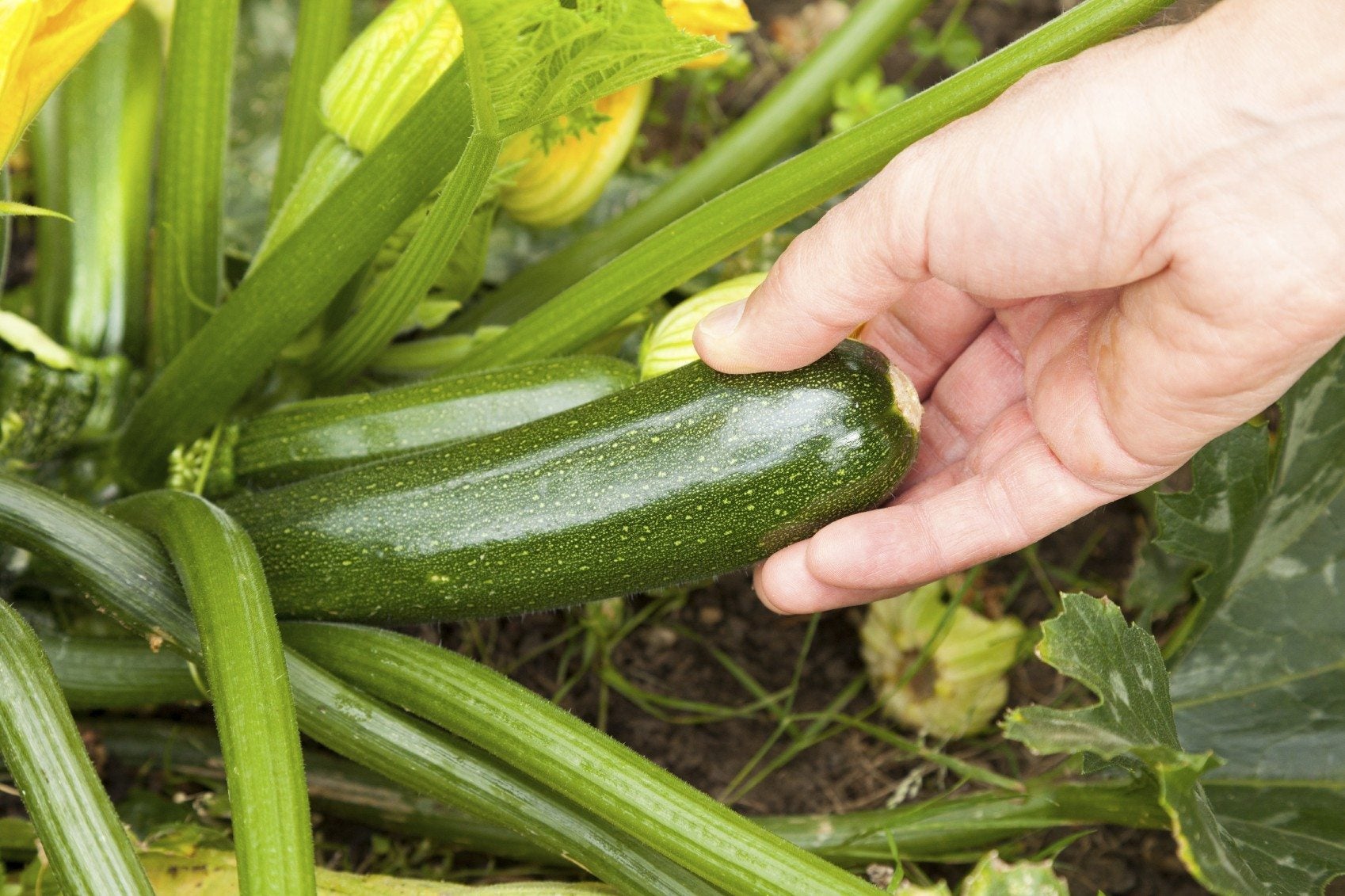
Zucchini Harvesting
Zucchini is a versatile and delicious vegetable that can be enjoyed in various dishes, from salads to stir-fries. But when it comes to harvesting zucchini, it’s important to know the right time to pick them. Harvesting zucchini at the right stage of ripeness ensures that you enjoy the best flavor and texture. In this article, we will discuss the different indicators that can help you determine when to pick zucchini, as well as some tips on how to properly harvest and store your zucchini for maximum freshness and flavor.
Checking the Size
The size of a zucchini can be a good indicator of its readiness for harvest. Generally, zucchinis are ready to be picked when they are around 6 to 8 inches long. At this size, they are still tender and have a mild flavor. If left to grow larger, zucchinis can become overripe, with tougher skin and seeds. So, it’s best to harvest them when they reach the ideal size for optimal taste and texture.
Inspecting the Color
Another important factor to consider when determining the ripeness of zucchinis is their color. Mature zucchinis usually have a bright, vibrant green color. Avoid picking zucchinis that have a dull or yellowish hue, as it may indicate that they are overripe. On the other hand, if you notice any signs of rot or discoloration, it’s best to discard those zucchinis as they may have already passed their peak freshness.
Examining the Texture
The texture of a zucchini can also provide valuable clues about its ripeness. When zucchinis are ready to be harvested, their skin should be smooth and firm to the touch. If you notice any soft spots or wrinkling, it may be a sign that the zucchini is past its prime. Additionally, young zucchinis tend to be tender, while older ones can have a coarse texture. So, be sure to gently squeeze the zucchini to assess its firmness and texture before picking.
Other Indicators
Aside from size, color, and texture, there are a few other indicators that can help you determine the right time to pick zucchinis. Let’s explore these factors in more detail:
Observing the Plant
Take a close look at the zucchini plant itself. Mature zucchini plants usually have large, healthy leaves and strong stems. If the plant looks vigorous and well-nourished, it’s an indication that the zucchinis are likely to be at their peak ripeness. On the other hand, if the plant appears weak or wilted, it may be a sign that the zucchinis are not yet fully matured.
Knowing the Expected Time
It’s essential to have a general idea of the expected time for zucchinis to reach their harvesting stage. Most zucchinis take around 45 to 55 days from the time of planting to mature. By keeping track of the planting date, you can estimate when your zucchinis are likely to be ready for harvest. However, it’s important to note that this timeframe can vary depending on factors such as weather conditions and the specific variety of zucchini you are growing.
Considering the Weather
Weather conditions can have a significant impact on the ripening process of zucchinis. Warm and sunny weather promotes faster growth, while cooler temperatures may delay the maturation of the zucchinis. If you are experiencing an unusually cold or rainy period, it’s advisable to wait a bit longer before harvesting your zucchinis. Giving them some extra time to develop under optimal weather conditions can ensure that you harvest zucchinis with the best flavor and texture.
Avoiding Overripe Zucchini
Just as it’s important to know when to pick zucchinis, it’s equally crucial to be able to identify signs of overripeness. Overripe zucchinis can have a tougher texture, larger seeds, and a less desirable taste. Here are some key indicators to look out for:
Detecting Signs of Overripeness
One common sign of an overripe zucchini is its size. If a zucchini has grown excessively large, it may be past its prime. Additionally, an overripe zucchini tends to have a dull and yellowish color, with blotchy or discolored skin. When you press on an overripe zucchini, it may feel soft and mushy, indicating that it has lost its firmness and developed a mealy texture.
Preventing Overripening
To prevent zucchinis from becoming overripe, it’s essential to consistently check your plants and harvest any ripe zucchinis as soon as they are ready. Leaving zucchinis on the plant for too long can cause them to grow larger and lose their optimal flavor and texture. By harvesting zucchinis promptly, you can ensure that each one is at its peak ripeness, ready to be enjoyed in your favorite recipes.
Preventing Underripe Zucchini
While overripe zucchinis are less desirable, harvesting zucchinis that are underripe can also result in a disappointing culinary experience. Underripe zucchinis may have a bitter taste and a firmer, less tender texture. Here’s how you can identify and promote ripening in underripe zucchinis:
Identifying Underripeness
Underripe zucchinis are typically smaller in size than their fully mature counterparts. They may have a pale green color and a glossy appearance. When you touch an underripe zucchini, it will feel firm and may not yield much when gently squeezed. If you find that your zucchinis are consistently underripe, you may need to adjust your harvesting schedule or consider providing your plants with additional care and nutrients to encourage proper ripening.
Promoting Ripening
To encourage the ripening process in underripe zucchinis, you can leave them on the plant for a bit longer, allowing them more time to develop. Additionally, providing your zucchini plants with adequate water and nutrients can help promote healthy growth and ripening. However, be mindful not to leave them on the plant for too long, as this can lead to overripening. It’s a delicate balance, but with careful observation and regular monitoring, you can achieve the perfect level of ripeness in your zucchinis.
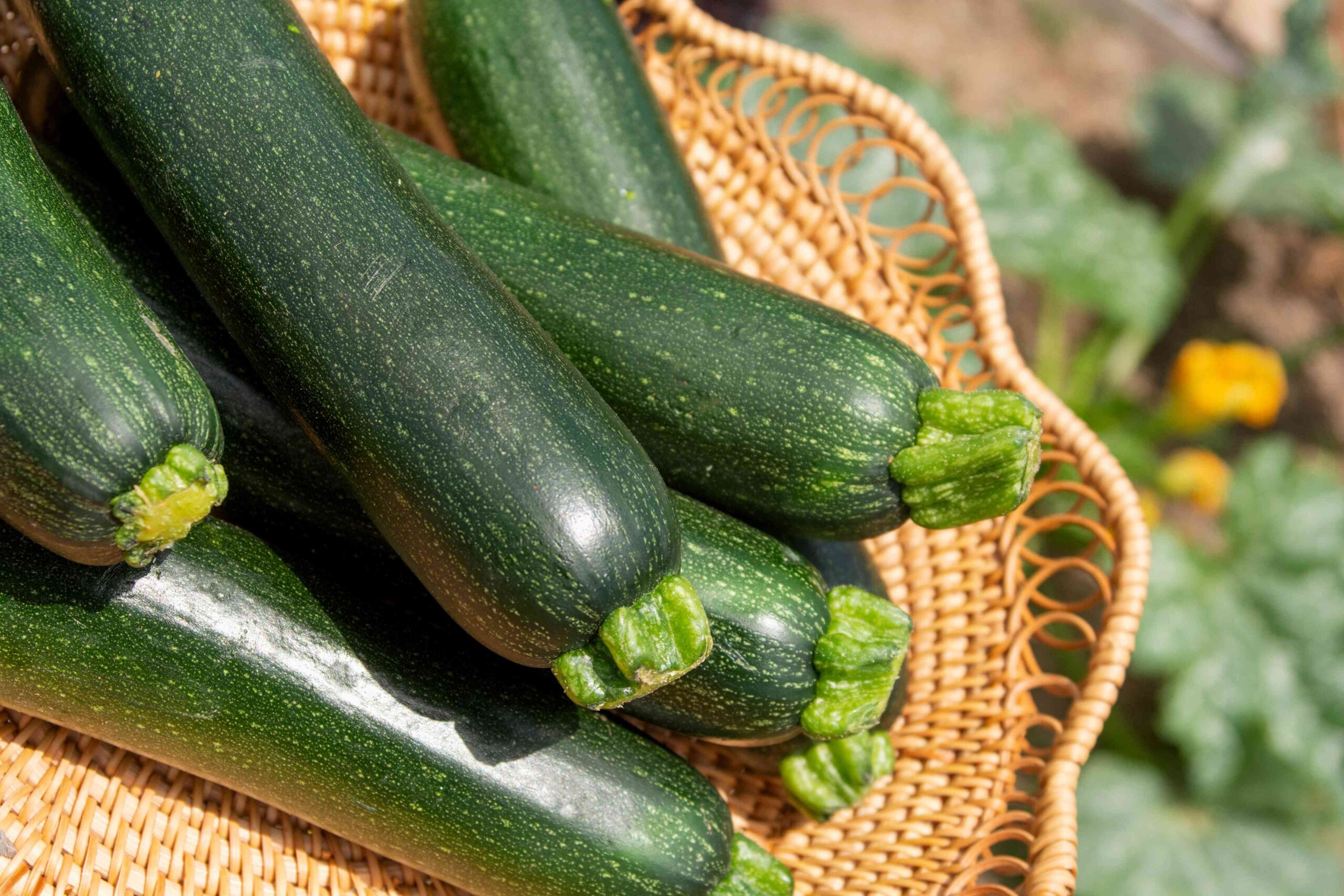
Tools for Harvesting Zucchini
Now that you know how to determine the right time to pick zucchinis, let’s discuss the tools you’ll need to ensure a successful harvest. Here are some essential tools for harvesting zucchinis:
Garden Shears
A pair of sharp garden shears is a must-have tool for harvesting zucchinis. They are ideal for cleanly cutting through the thick stems without causing any damage to the plant. Choose a pair of shears with a comfortable grip and a strong, durable blade for efficient and precise harvesting.
Pruning Knife
In addition to garden shears, a pruning knife can come in handy when harvesting zucchinis. A pruning knife allows you to make clean cuts close to the stem, minimizing the risk of damaging the zucchini or the plant. Look for a knife with a sharp blade and a comfortable handle that provides good control during the harvesting process.
Harvesting Basket
To collect your freshly harvested zucchinis, a sturdy harvesting basket is essential. Opt for a basket with a wide opening and sturdy handles that can comfortably accommodate the size and weight of your zucchinis. A breathable basket made of materials such as bamboo or wire mesh allows for proper airflow, preventing moisture buildup and extending the shelf life of your harvested zucchinis.
Proper Harvesting Techniques
Now that you have the tools ready, let’s explore some proper harvesting techniques to ensure that you gather your zucchinis without causing any damage to the plant:
Cutting the Stem
To harvest a zucchini, use your garden shears or pruning knife to cut the stem about one inch above the zucchini. Make a clean, diagonal cut to help minimize the risk of rot or disease. Avoid twisting or pulling the zucchini, as this can damage the plant and affect the growth of future zucchinis. Always aim for a clean cut to ensure a healthy harvest.
Trimming the Blossom End
Once you have harvested the zucchinis, you can trim the blossom end if desired. The blossom end is the end of the zucchini where the flower was attached. Some people prefer to remove this end, as it can be slightly bitter. Use a sharp knife to trim off the blossom end, making a clean cut to ensure that the zucchini retains its attractive appearance.
Avoiding Damage to the Plant
When harvesting zucchinis, it’s important to handle the plant with care to avoid causing any unnecessary damage. Gently hold the stem of the zucchini near its base while cutting to provide support and prevent any stress on the plant. By being mindful of your movements and using the proper tools, you can ensure a successful harvest while keeping your zucchini plant healthy and productive.

Frequency of Harvest
To maximize the yield of your zucchini plants, it’s essential to establish a regular harvesting routine. Regularly harvesting zucchinis not only encourages the plant to continue producing but also helps prevent the zucchinis from becoming overripe. Let’s explore the frequency of harvesting and the ideal schedule for picking zucchinis:
Regular Harvesting
As zucchinis can grow rapidly, it’s crucial to check your plants frequently, especially during the peak harvest season. Harvest your zucchinis every two to three days to ensure that you gather them when they are at their best. Regular harvesting also helps prevent the zucchinis from growing too large and losing their tender texture.
Ideal Harvesting Schedule
The ideal schedule for harvesting zucchinis may vary depending on the specific variety, weather conditions, and the rate of growth. However, as a general guideline, aim to harvest zucchinis when they are around 6 to 8 inches long. By sticking to a regular harvest schedule and regularly monitoring your plants, you can enjoy a bountiful harvest of zucchinis throughout the growing season.
Storing Zucchini
Now that you have successfully harvested your zucchinis, it’s important to store them properly to maintain their freshness and flavor. Here are some storage methods for zucchinis:
Refrigeration
Zucchinis can be stored in the refrigerator to keep them fresh for a longer period. Place your zucchinis in a perforated plastic bag or a vegetable crisper drawer to help maintain the appropriate level of humidity. Avoid washing the zucchinis before storage, as excess moisture can lead to spoilage. Stored properly, zucchinis can last for about one to two weeks in the refrigerator.
Freezing
If you have a surplus of zucchinis, freezing them is a great way to preserve their flavor and texture for an extended period. First, wash the zucchinis and cut them into slices or chunks, depending on your preference. Blanch the zucchini pieces in boiling water for a few minutes, then transfer them to an ice bath to stop the cooking process. Drain the blanched zucchini and place them in airtight freezer bags or containers. Frozen zucchinis can be stored for up to six months.
Canning
Another method for preserving your zucchinis is canning. You can pickle zucchini or make zucchini relish to enjoy the flavors of summer all year round. Follow a trusted canning recipe and ensure that your jars are properly sealed to maintain the safety and quality of the canned zucchinis. Canned zucchinis can last for several months to a year, depending on the specific recipe and canning method used.
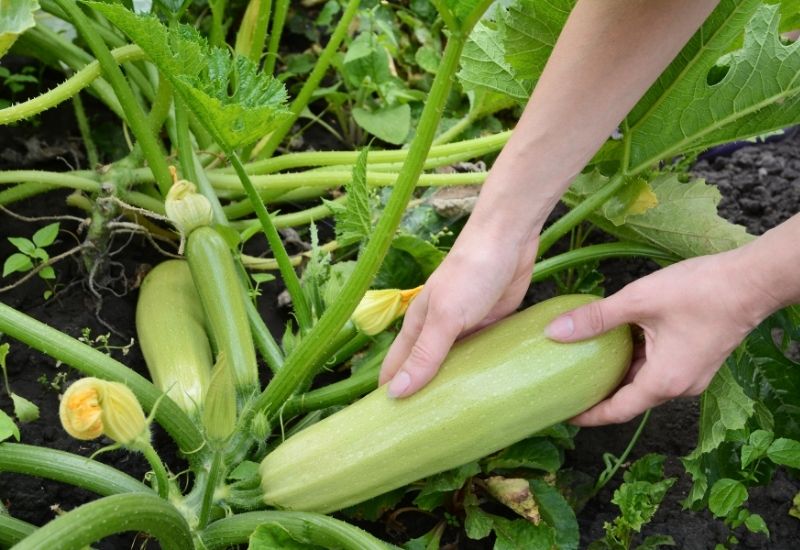
Utilizing the Entire Zucchini
When it comes to zucchinis, it’s all about making the most of every part. From the blossoms to the flesh, here are some creative ways to utilize the entire zucchini:
Using the Blossoms
Zucchini blossoms are not only beautiful but also delicious. They have a delicate, slightly sweet flavor that can be enjoyed in various dishes. Stuff the blossoms with a filling of your choice, such as cheese or herbs, and lightly fry them for a tasty appetizer. You can also add zucchini blossoms to salads, pasta dishes, or omelets for a burst of color and flavor.
Making Zucchini Noodles
Zucchini noodles, also known as zoodles, are a healthy and low-carb alternative to traditional pasta. With a spiralizer or a vegetable peeler, you can easily transform zucchinis into long, thin strands that can be enjoyed in various recipes. Sauté the zoodles in a pan with some olive oil and your favorite seasonings, or toss them raw into salads for a refreshing and nutritious meal.
Preparing Zucchini Bread
If you have an abundance of zucchinis, why not make some delicious zucchini bread? Zucchini bread is moist, flavorful, and a great way to use up excess zucchinis. There are countless recipes available online that will guide you through the process of making this delightful treat. Enjoy it for breakfast, as a snack, or even as a dessert with a dollop of whipped cream or cream cheese frosting.
Common Mistakes to Avoid
While harvesting zucchinis may seem straightforward, there are a few common mistakes that inexperienced gardeners often make. Avoiding these pitfalls can help ensure a successful zucchini harvest:
Waiting Too Long
One of the most common mistakes is waiting too long to harvest zucchinis. As mentioned earlier, zucchinis can grow rapidly, and delaying their harvest can lead to overripeness and a decline in taste and texture. Be proactive and check your zucchini plants regularly to gather the zucchinis at their peak ripeness.
Harvesting Too Early
On the other hand, harvesting zucchinis too early can also result in disappointment. Underripe zucchinis may have a bitter taste and a less desirable texture. Take the time to properly assess the size, color, and texture of the zucchinis before harvesting. Patience is key when it comes to growing and harvesting zucchinis.
Neglecting the Plant
Proper care and maintenance of your zucchini plants play a significant role in ensuring a successful harvest. Neglecting the plant by not providing it with adequate water, sunlight, and nutrients can affect the growth and development of the zucchinis. Be sure to follow proper watering and fertilizing practices and keep an eye out for any signs of pests or diseases that may impact the health of your zucchini plants.
By following these guidelines and taking the time to understand the indicators of ripeness, you can become a successful zucchini harvester. Remember, the joy of growing your own zucchinis extends beyond the harvesting process. From enjoying their fresh flavors to exploring creative recipes, zucchinis are a versatile and rewarding addition to any garden. Happy harvesting!
